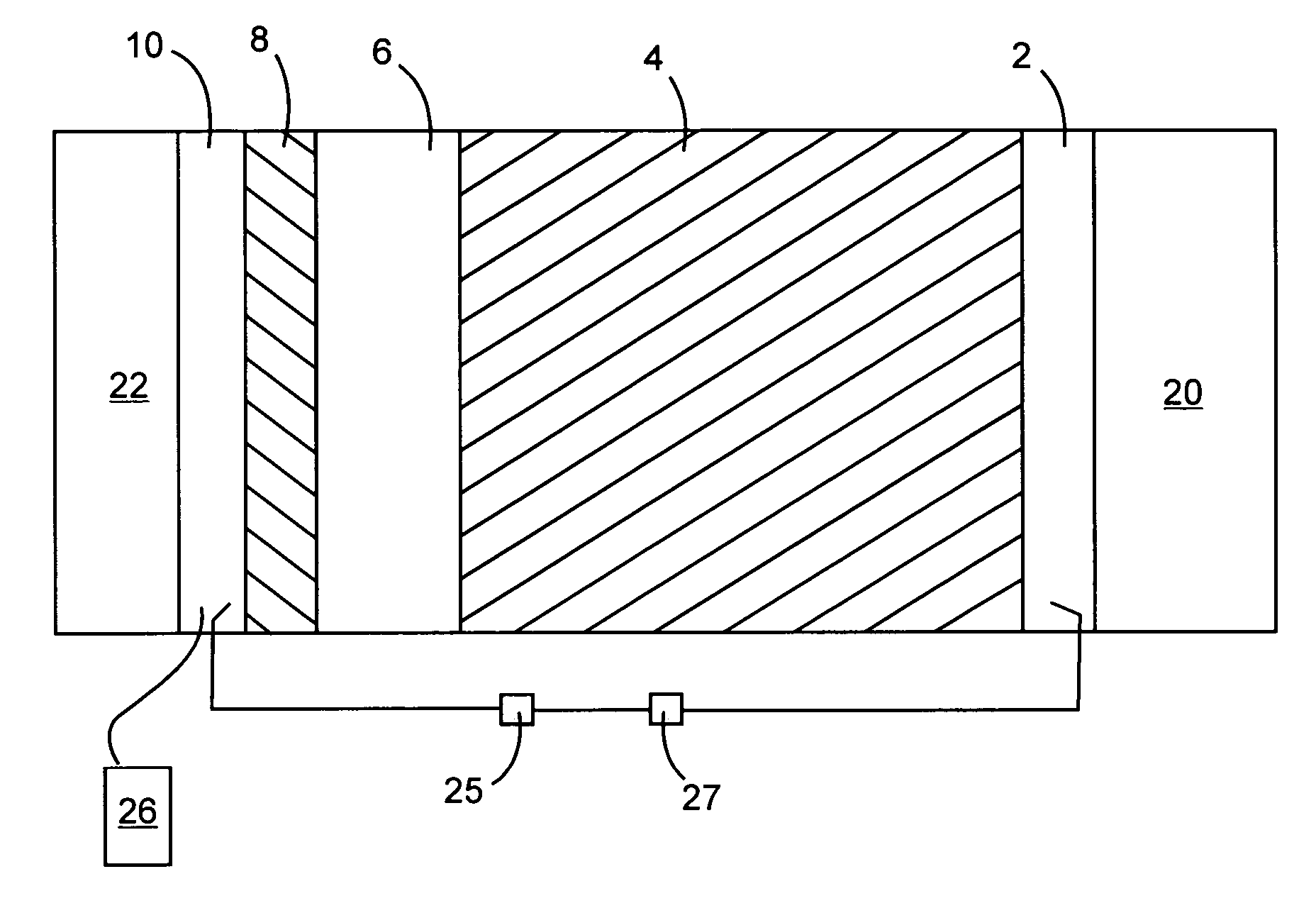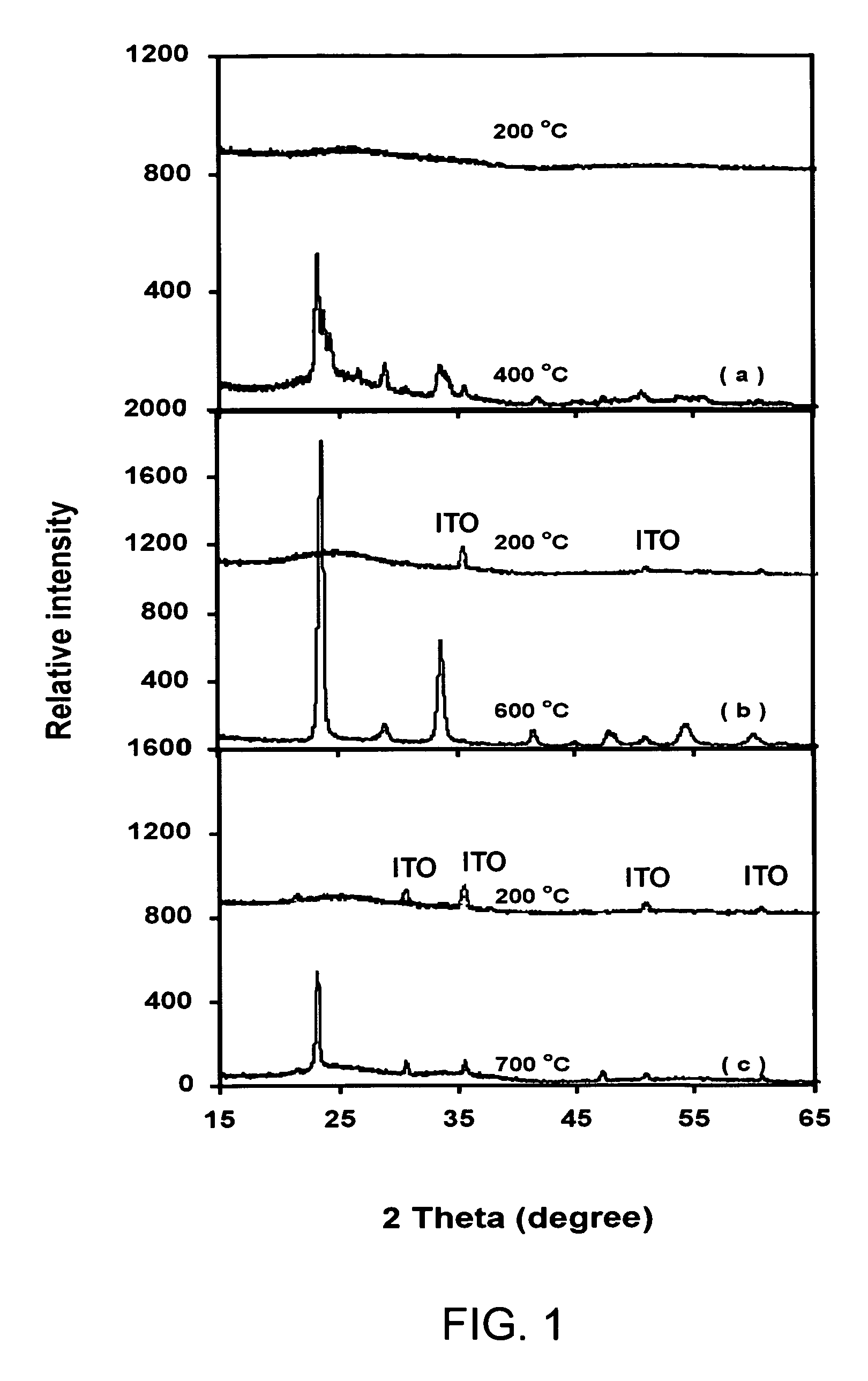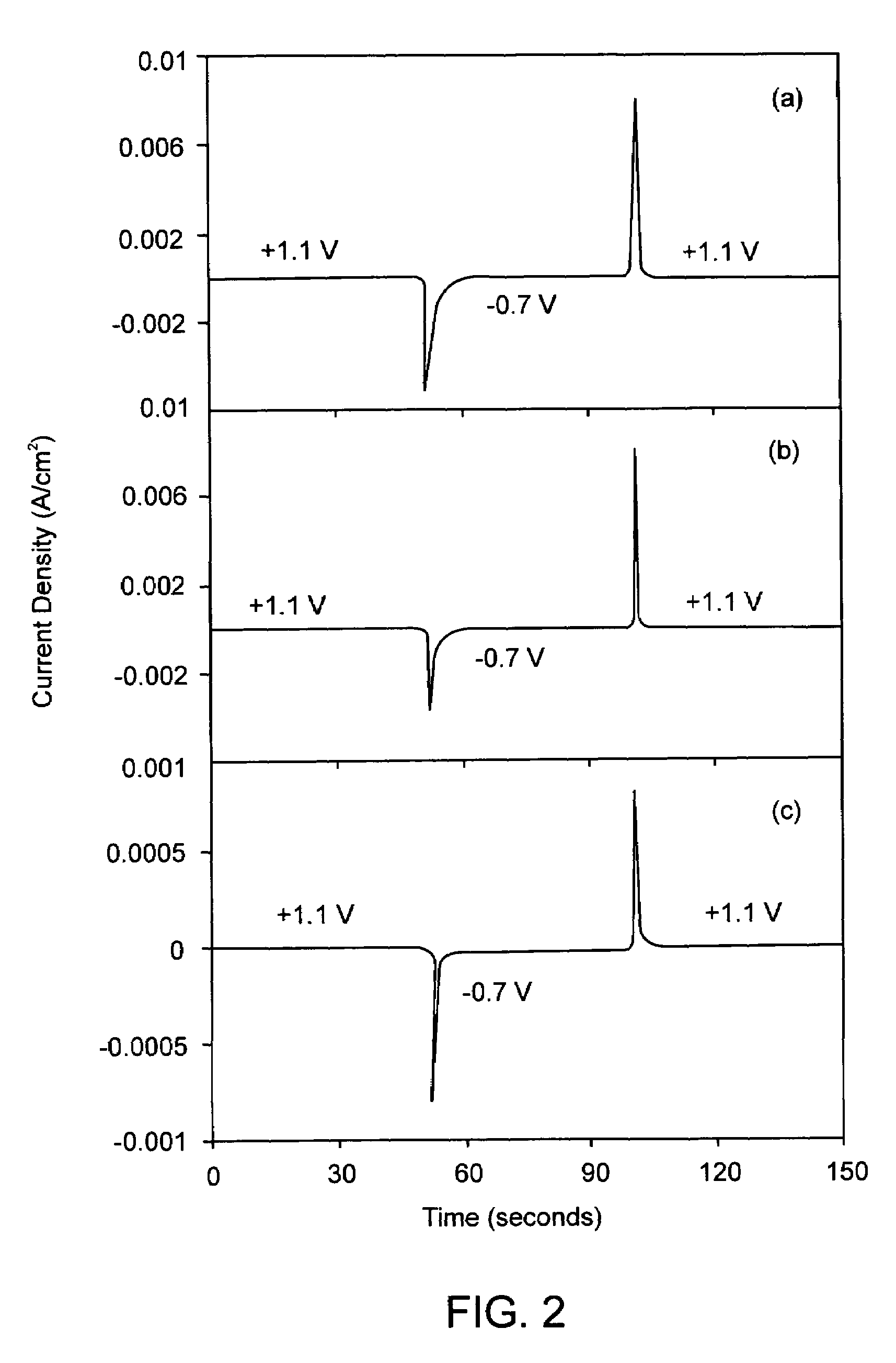Electrochromic material
a technology of electrochromic materials and materials, applied in the direction of discharge tube main electrodes, conductors, instruments, etc., can solve the problems of fog factor, inability to meet the needs of use, and the most common use of pdlcs, etc., to improve cyclic durability and chemical stability, reduce degradation problems, and improve durability
- Summary
- Abstract
- Description
- Claims
- Application Information
AI Technical Summary
Benefits of technology
Problems solved by technology
Method used
Image
Examples
example 1
Preparation of W1−xTaxO3−x / 2 Films
[0042]W1−xTaxO3−x / 2 films were deposited by ablating a 90 mm diameter rotating W1−xTaxO3−x / 2 target (Ta0.1W0.9O2.95, 99.9%, from SCI Engineered Materials, Ta0.3W0.7O2.85, 99.95%, and WO3, 99.99% both from Super Conductor Materials) in an advanced deposition chamber (PVD Inc., PLD-3000) by means of a pulsed KrF excimer laser (λ=248 nm, Lambda Physik, LPX-210i), at a repetition rate of 50 Hz. The laser beam was focused down to a spot size of about 4 mm2 on the target surface and the on-target laser beam fluence was adjusted to about 2 to 3 J / cm2. A 25 mm×50 mm×1.1 mm rectangle indium tin oxide (ITO) coated glass (unpolished float glass, SiO2 passivated / ITO coated one surface, Rs=6±2Ω, SiO2 layer thickness: 20-30 nm, ITO layer thickness: 150-200 nm, Delta Technologies, Limited) was used as the substrate for the deposition. To achieve uniform deposition over the entire substrate surface, the laser beam was rastered over the radius of the rotating target...
example 2
Structural Characterization of W1−xTaxO3−x / 2 Films
[0044]Structures of the films were examined by X-ray diffraction (XRD, Philips, X-Pert MRD) using monochromatized Cu Kα in the θ0-2θ thin film configuration, where θ0 was fixed at 1°. FIG. 1 shows XRD patterns of WO3, Ta0-1W0.9O2.95 and Ta0.3W0.7O2.85 films deposited in 5.32 Pa of oxygen at 200° C. and their respective crystallization temperatures. At substrate temperatures of 200° C., XRD patterns of all the three materials consist of a diffuse-scattering curve with a broad band centered at 2θ of about 25°. Such a profile indicates an amorphous-like structure. Besides the broad band, a few small peaks originated from ITO layer also appear as indicated in the figure. By increasing the substrate temperatures, WO3 film begins to crystallize at 400° C., while Ta0.1W0.9O2.95 crystallizes at 600° C and Ta0.3W0.7O2.85 at 700° C., respectively. As the Ta content x increases, higher temperatures are required to form crystalline structures.
[0...
example 3
Electrochromic Properties of W1−xTaxO3−x / 2 Films
[0051]Electrochromic property tests were performed in an electrochemical-optical cell consisting of a Pt ring counter electrode and an Ag / AgCl reference electrode both sandwiched in between the coated ITO glass working electrode and a quartz window. The cell allows electrochemical measurements using a Gamry PC3 potentiostat and optical transmittance measurements using a fiber-optic-based spectrophotometer to be carried out simultaneously: H+ intercalation and deintercalation of W1−xTaxO3−x / 2 films were accomplished by varying the electrical potential of the films between −0.7 V (vs. Ag / AgCl) and +1.1 V (vs. Ag / AgCl) in 0.1 M H3PO4 electrolyte at a frequency of 0.01 Hz. Spectral transmittance of the film (plus a thin electrolyte layer of 6 mm thick and the quartz window of 3 mm thick) was measured in-situ using the spectrophotometer in the 250-850 nm ranges. The surface area of the films in contact with electrolyte is 4.1 cm2.
[0052]Ele...
PUM
| Property | Measurement | Unit |
|---|---|---|
| thickness | aaaaa | aaaaa |
| thickness | aaaaa | aaaaa |
| thick | aaaaa | aaaaa |
Abstract
Description
Claims
Application Information
 Login to View More
Login to View More - R&D
- Intellectual Property
- Life Sciences
- Materials
- Tech Scout
- Unparalleled Data Quality
- Higher Quality Content
- 60% Fewer Hallucinations
Browse by: Latest US Patents, China's latest patents, Technical Efficacy Thesaurus, Application Domain, Technology Topic, Popular Technical Reports.
© 2025 PatSnap. All rights reserved.Legal|Privacy policy|Modern Slavery Act Transparency Statement|Sitemap|About US| Contact US: help@patsnap.com



